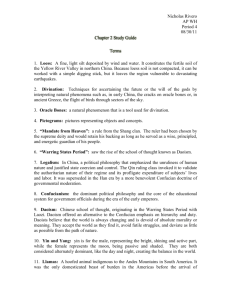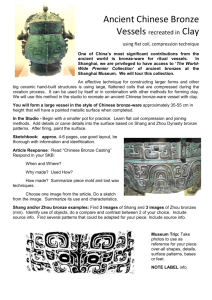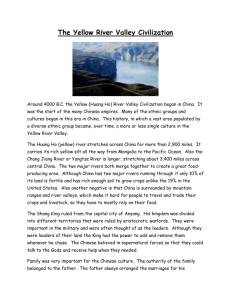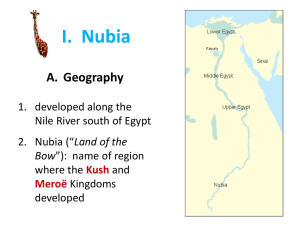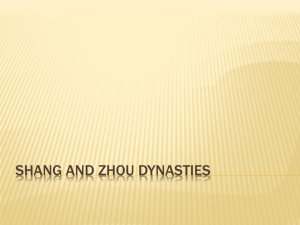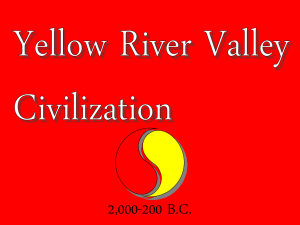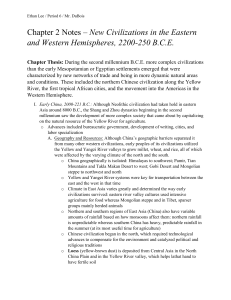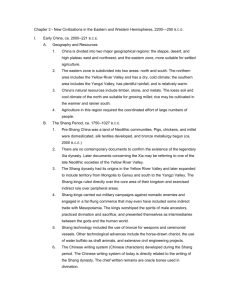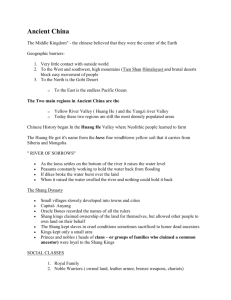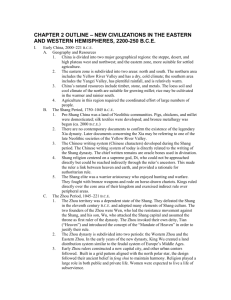Chapter 3 - Marion County Public Schools
advertisement
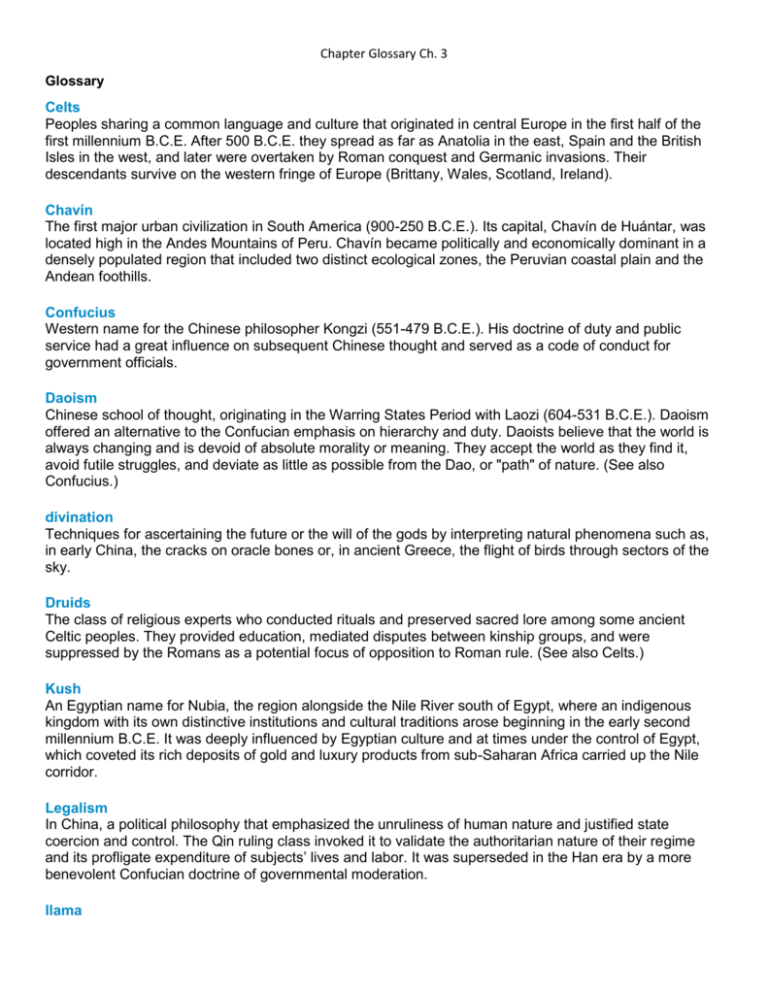
Chapter Glossary Ch. 3 Glossary Celts Peoples sharing a common language and culture that originated in central Europe in the first half of the first millennium B.C.E. After 500 B.C.E. they spread as far as Anatolia in the east, Spain and the British Isles in the west, and later were overtaken by Roman conquest and Germanic invasions. Their descendants survive on the western fringe of Europe (Brittany, Wales, Scotland, Ireland). Chavín The first major urban civilization in South America (900-250 B.C.E.). Its capital, Chavín de Huántar, was located high in the Andes Mountains of Peru. Chavín became politically and economically dominant in a densely populated region that included two distinct ecological zones, the Peruvian coastal plain and the Andean foothills. Confucius Western name for the Chinese philosopher Kongzi (551-479 B.C.E.). His doctrine of duty and public service had a great influence on subsequent Chinese thought and served as a code of conduct for government officials. Daoism Chinese school of thought, originating in the Warring States Period with Laozi (604-531 B.C.E.). Daoism offered an alternative to the Confucian emphasis on hierarchy and duty. Daoists believe that the world is always changing and is devoid of absolute morality or meaning. They accept the world as they find it, avoid futile struggles, and deviate as little as possible from the Dao, or "path" of nature. (See also Confucius.) divination Techniques for ascertaining the future or the will of the gods by interpreting natural phenomena such as, in early China, the cracks on oracle bones or, in ancient Greece, the flight of birds through sectors of the sky. Druids The class of religious experts who conducted rituals and preserved sacred lore among some ancient Celtic peoples. They provided education, mediated disputes between kinship groups, and were suppressed by the Romans as a potential focus of opposition to Roman rule. (See also Celts.) Kush An Egyptian name for Nubia, the region alongside the Nile River south of Egypt, where an indigenous kingdom with its own distinctive institutions and cultural traditions arose beginning in the early second millennium B.C.E. It was deeply influenced by Egyptian culture and at times under the control of Egypt, which coveted its rich deposits of gold and luxury products from sub-Saharan Africa carried up the Nile corridor. Legalism In China, a political philosophy that emphasized the unruliness of human nature and justified state coercion and control. The Qin ruling class invoked it to validate the authoritarian nature of their regime and its profligate expenditure of subjects’ lives and labor. It was superseded in the Han era by a more benevolent Confucian doctrine of governmental moderation. llama A hoofed animal indigenous to the Andes Mountains in South America. It was the only domesticated beast of burden in the Americas before the arrival of Europeans. It provided meat and wool. The use of llamas to transport goods made possible specialized production and trade among people living in different ecological zones and fostered the integration of these zones by Chavín and later Andean states. loess A fine, light silt deposited by wind and water. It constitutes the fertile soil of the Yellow River Valley in northern China. Because loess soil is not compacted, it can be worked with a simple digging stick, but it leaves the region vulnerable to devastating earthquakes. Mandate of Heaven Chinese religious and political ideology developed by the Zhou, according to which it was the prerogative of Heaven, the chief deity, to grant power to the ruler of China and to take away that power if the ruler failed to conduct himself justly and in the best interests of his subjects. Meroë Capital of a flourishing kingdom in southern Nubia from the fourth century B.C.E. to the fourth century C.E. In this period Nubian culture shows more independence from Egypt and the influence of subSaharan Africa. Olmec The first Mesoamerican civilization. Between ca. 1200 and 400 B.C.E., the Olmec people of central Mexico created a vibrant civilization that included intensive agriculture, wide-ranging trade, ceremonial centers, and monumental construction. The Olmec had great cultural influence on later Mesoamerican societies, passing on artistic styles, religious imagery, sophisticated astronomical observation for the construction of calendars, and a ritual ball game. Shang The dominant people in the earliest Chinese dynasty for which we have written records (ca. 1750-1045 B.C.E.). Ancestor worship, divination by means of oracle bones, and the use of bronze vessels for ritual purposes were major elements of Shang culture. yin/yang In Chinese belief, complementary factors that help to maintain the equilibrium of the world. Yang is associated with masculine, light, and active qualities; yin with feminine, dark, and passive qualities. Zhou The people and dynasty that took over the dominant position in north China from the Shang and created the concept of the Mandate of Heaven to justify their rule. The Zhou era, particularly the vigorous early period (1045-771 B.C.E.), was remembered in Chinese tradition as a time of prosperity and benevolent rule. In the later Zhou period (771-221 B.C.E.), centralized control broke down, and warfare among many small states became frequent.
